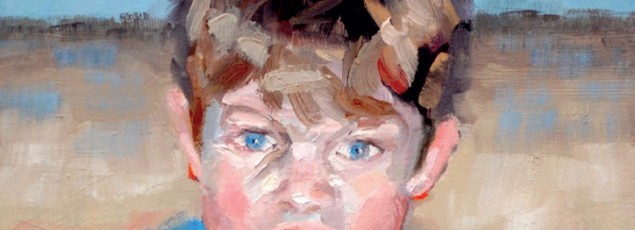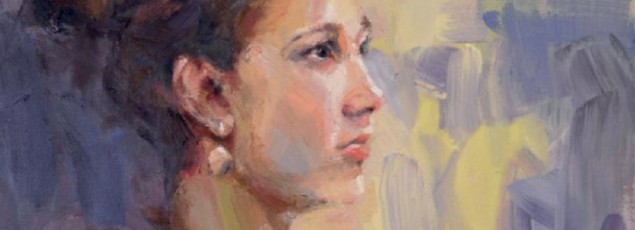I paint portraits and find the practice endlessly fascinating. I paint other genres but always come back to portraits. What is it about portraits? I have often wondered.
There are some particular characteristics about portraits. The sitter only sees him or herself live when looking in a mirror, so that seeing their portrait for the first time as a non-mirror image can induce a slightly uncanny feeling. Also the sitter is so used to their facial features that seeing them in paint may make them consider them afresh. The artist may focus on a feature that they think is key to the sitter’s physiognomy or character, but which the sitter may or may not have noticed. A loose painting may leave a lot to the imagination of the viewer (but nevertheless reach the essence of the sitter), which may initially appear strange to the viewer. A portrait usually shows the head much larger than in a photograph.
After some preliminary thinking in terms of the pose, composition, tonal and colour thumbnails etc., I prefer to paint somewhat loosely in a spontaneous and expressive way. In spite of having rather a large number of brushes of all sorts in my studio, in practice for canvases up to 20 x 16 inch (50 x 40 cm) I use just two large size 12 Classic short flat brushes and nothing else. I really like their firmness and durability. I find that I can make all the marks that I want using the flat of the brush, a portion of the flat (by twisting the brush a little), the edge or the corner. For large canvases I use larger brushes. Just two brushes saves time too in not having to swap between lots of brushes, as well as giving the bonus of reducing brush washing time!
Images courtesy of Michael Jules Lang.
See more of Michael’s work at: www.michaeljuleslang.com


